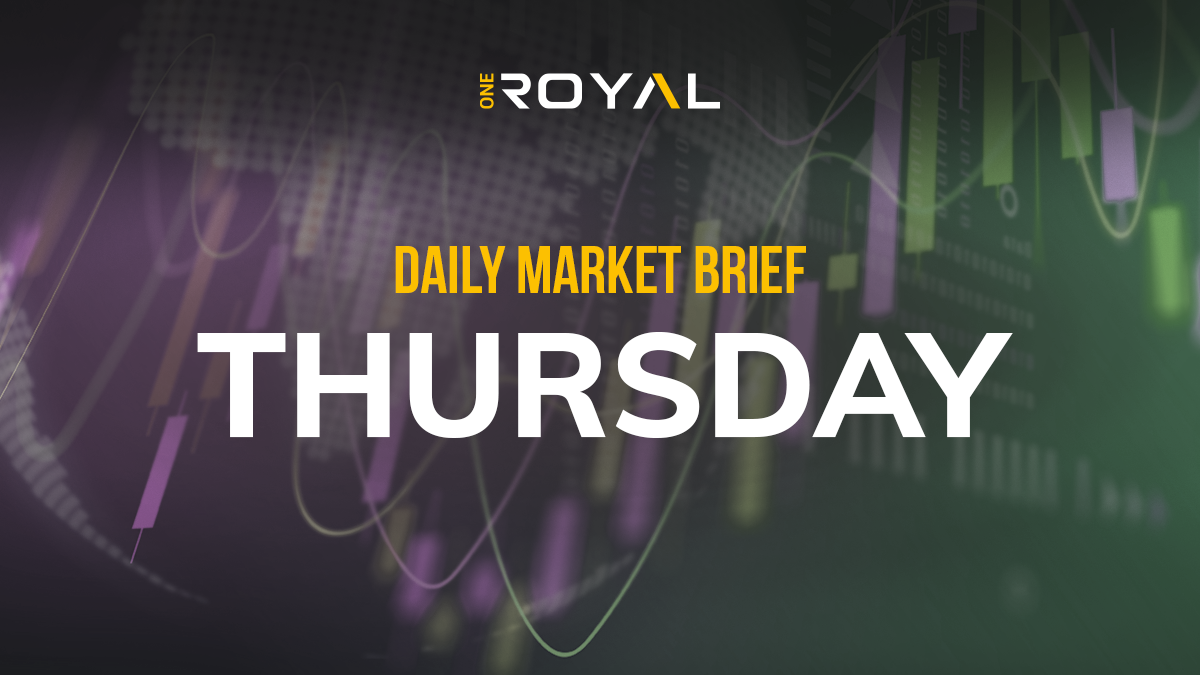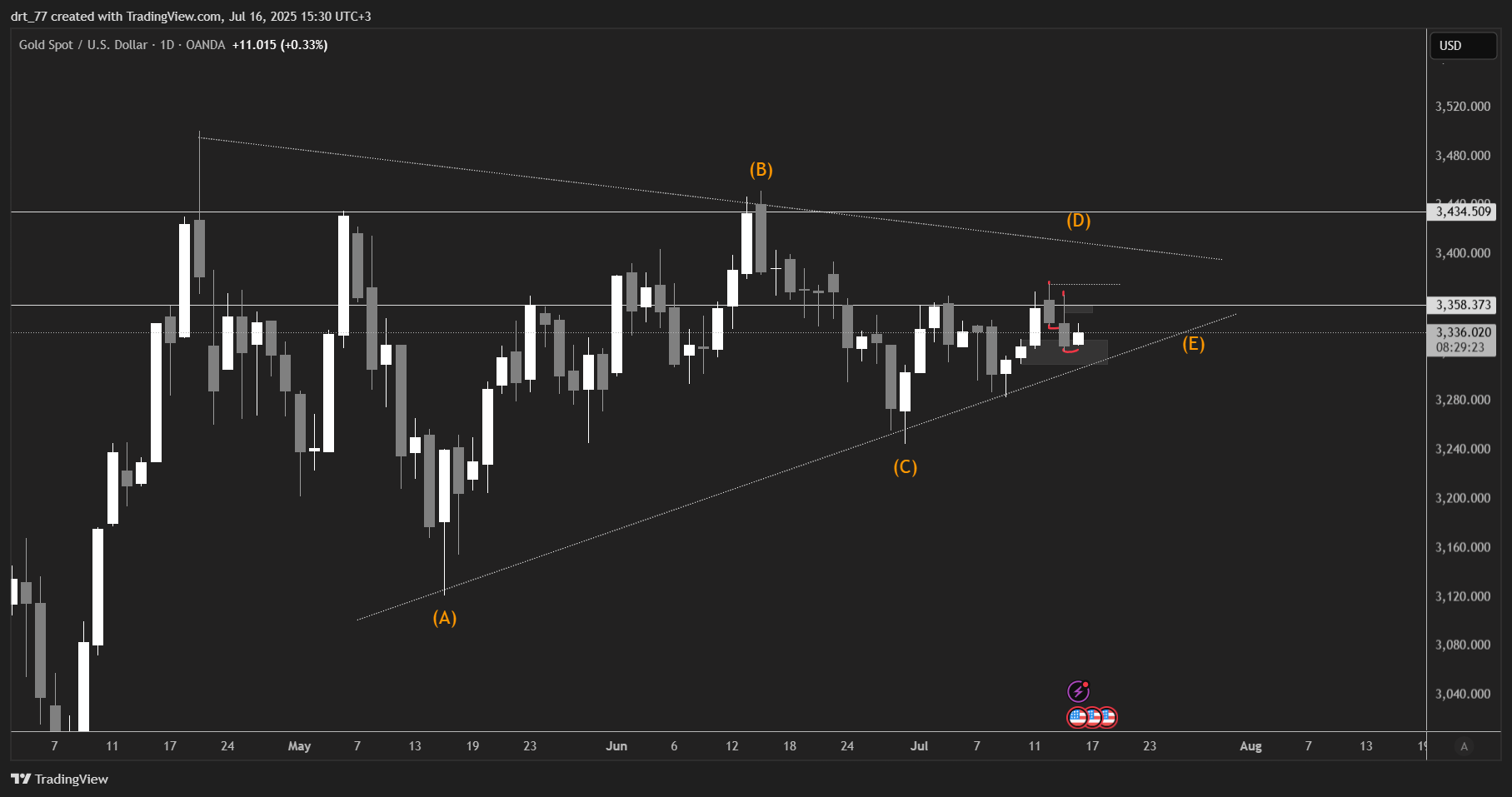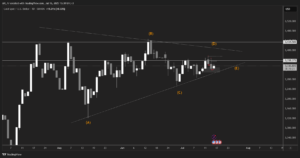Global gold prices fluctuate during these moments of trading, Thursday, after the US Federal Reserve kept interest rates steady, while investors’ focus shifted to US non-farm payroll data due to be released tomorrow.
The Federal Reserve’s latest monetary policy statement left the key elements of its economic assessment and monetary policy guidance unchanged, setting the stage for its discussions around interest rates on the terms under which rates could be cut.
Fed Chair Jerome Powell said the next move would be data-dependent, but rate hikes are unlikely. In the aftermath of the meeting, US short-term interest rate futures rose as traders added to their bets that the Fed will cut at least once this year. Lower interest rates make holding non-yielding bullion more attractive.
Gold and Dollar Now
Gold futures are now up 0.55% to $2324 an ounce. Spot gold is down about 0.22% to $2314 an ounce. On the other hand, the dollar index is down 0.06% to 105.570.
Other Metals
Palladium gained one percent to $959.35 an ounce in spot trading after hitting a two-week high earlier in the session, while palladium advanced 0.4 percent to $952.38. Silver, meanwhile, fell 0.3% to $26.57.
Oil Rises on Expectation of US Strategic Reserve Replenishment
Oil prices rose on Thursday after suffering three days of losses, with the rebound coming on expectations that falling prices will prompt the United States to start replenishing its strategic oil reserve, putting a floor under prices. Prices plunged by more than three percent yesterday, Wednesday, to a seven-week low after the Federal Reserve kept interest rates unchanged, which could dampen economic growth this year and limit demand gains for oil.
Oil was also under pressure from an unexpected rise in US crude inventories and signs that a ceasefire is close between Israel and Hamas, which would ease Middle East supply concerns. Brent July futures rose 58 cents, or 0.7 percent, to $84.02 a barrel by 0633 GMT on Thursday. US West Texas Intermediate (WTI) June crude rose 53 cents, or 0.7 percent, to $79.53 a barrel.
The United States says it is looking to refill its strategic oil reserve after a historic drawdown from emergency stocks in 2022, and that it wants to buy back oil at $79 a barrel or less. In the Middle East, expectations of a ceasefire agreement between Israel and Hamas grew after a fresh Egypt-led effort.
Even so, Israeli Prime Minister Benjamin Netanyahu has vowed to press ahead with a long-threatened ground assault on the southern Gaza city of Rafah, despite US opposition and UN warnings that it would lead to a “catastrophe.” The US Energy Information Administration (EIA) said crude inventories rose by 7.3 million barrels to 460.9 million barrels in the week ended April 26, against analysts’ expectations in a Reuters poll for a draw of 1.1 million barrels.
The EIA said inventories were at their highest since June. In the meantime, the Fed kept interest rates steady on Wednesday and signaled it is still tilted towards eventually easing borrowing costs, but it issued a cautionary note about recent disappointing inflation readings. Any delay in rate cuts could slow economic growth and dent oil demand. But the continued supply cuts by the OPEC+ alliance, which groups the Organization of the Petroleum Exporting Countries (OPEC) and allies, will support prices.
Yen Retreats After Sharp Gains Attributed by Traders to Intervention
The yen fell against the dollar on Thursday, reversing course after a surprise surge late Wednesday that traders and analysts immediately attributed to intervention by Japanese authorities. The yen fell 0.80% to 155.73 per dollar by 0537 GMT after retreating by about half its late Wednesday surge from around 157.55 to 153 in about 30 minutes.
The sharp overnight move came in a quiet period in markets as it followed the close of Wall Street and hours after the Federal Reserve’s monetary policy meeting ended. The dollar was already down as Federal Reserve Chairman Jerome Powell reaffirmed the central bank’s bias towards monetary easing, although he reiterated that rate cuts may take some time amid persistent inflation.
Deputy Japanese Finance Minister for International Affairs Masato Kanda, who oversees currency policy, told Reuters he had no comment on whether Japan had intervened in the market The US dollar has surged by more than 10% against the yen since the beginning of the year as traders anticipate a delay in the first US rate cut, while the Bank of Japan has signaled a slow pace of policy tightening after raising rates for the first time since 2007 in March.
The yield gap between long-term government bonds in the two countries stands at 376 basis points. This has helped propel the dollar to its highest level in 34 years at 160.245 yen on Monday, followed by a sharp decline that official data indicated was due to Japanese authorities intervening with a total of around $35 billion.
Takatoshi Ito, an academic at Columbia University and a former Finance Ministry official, told Reuters in an interview on Thursday that the Ministry of Finance likely intervened in the currency market to signal that it sees 160 yen per dollar as its upper limit.
The dollar index, which measures the currency’s performance against the yen, euro, and four other major currencies, was little changed, trading at 105.70 points on Thursday after falling 0.56% on Wednesday from its highest level in nearly six months. The euro rose to $1.07175 after gaining 0.45% in the previous session. The British pound climbed 0.06% to $1.25345 after rising 0.28% on Wednesday.
As widely expected, the US Federal Reserve kept rates unchanged on Wednesday, with Powell emphasizing that policymakers “will take longer than previously expected” to feel confident that inflation will resume its decline toward the 2% target. Meanwhile, he described the risk of further rate hikes as “unlikely.” The Australian dollar rose 0.23% to $0.6538. The New Zealand dollar was steady at $0.5930
For further insights, check OneRoyal’s Facebook, Instagram, and Twitter pages and expand your understanding of financial markets with global perspectives. Staying informed is crucial in the ever-evolving world of finance.
Disclaimer: This article is not investment advice or an investment recommendation and should not be considered as such. The information above is not an invitation to trade and it does not guarantee or predict future performance. The investor is solely responsible for the risk of their decisions. The analysis and commentary presented do not include any consideration of your personal investment objectives, financial circumstances, or needs.





